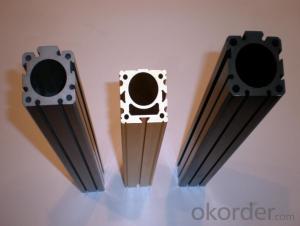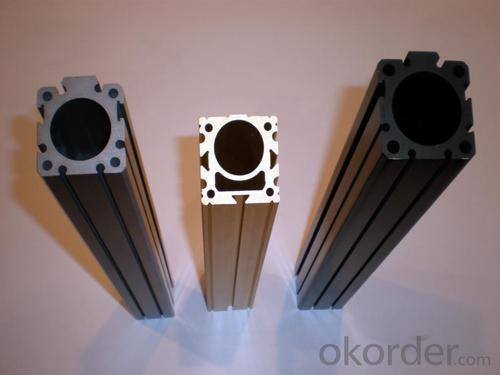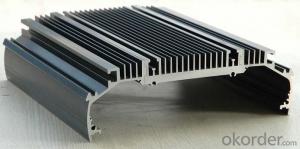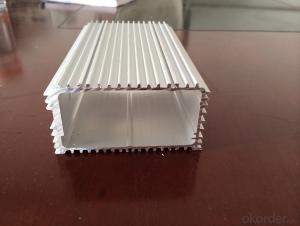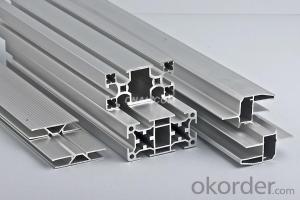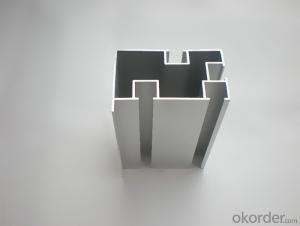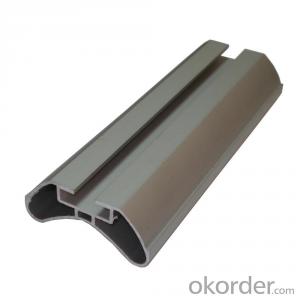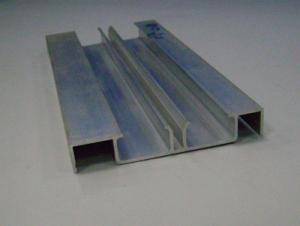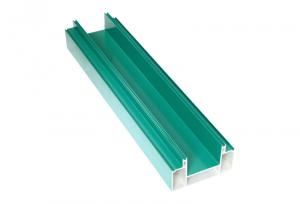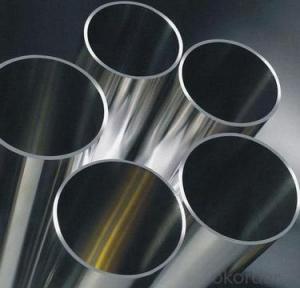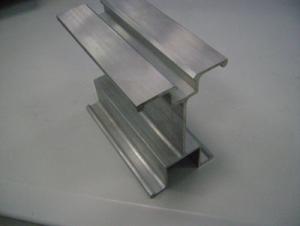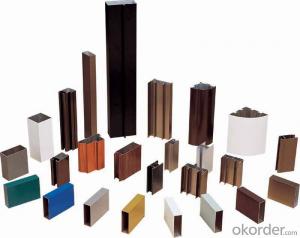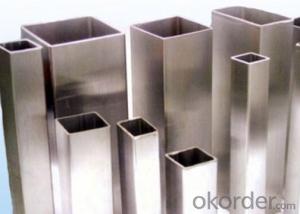Aluminum T-Slot Extrusion Profiles - Aluminium Profile Extrusion
- Loading Port:
- China Main Port
- Payment Terms:
- TT OR LC
- Min Order Qty:
- -
- Supply Capability:
- -
OKorder Service Pledge
Quality Product, Order Online Tracking, Timely Delivery
OKorder Financial Service
Credit Rating, Credit Services, Credit Purchasing
You Might Also Like
Quick Details
| Place of Origin: | Grade: | Temper: | |||
| Application: | Shape: | Alloy Or Not: | |||
| Model Number: | Brand Name: | Certificate:: | |||
| Surface Finish:: | alloy:: | Thickness:: | |||
| Max. Circumcircle:: | 300mm |
Packaging & Delivery
| Packaging Detail: | Aluminium profile pack into brown paper with protective plastic film or as per client's demand |
| Delivery Detail: | 15-30days |
Specifications
Alloy:6063,6061,6005 T5/T6
Finish:mill,anodized,powder coated,wood color;
Cutting,Drill,Punch,Deburr,Bend,Weld;
ISO certified
Aluminium Profile Extrusion
1. What kind of products and service we can provide:
- Aluminum Profile for construction, such as doors, windows, fence, screen, curtain wall, handrail, partition, wardrobe, greenhouse and sunroom, etc.
- Industrial Aluminum Profile for solar energy, LED, machinery, advertisement, transport, auto part, exhibit shelf, telecom. etc.
- Doors and Windows System, include sliding door, side hung window, tilt and turn window, etc.
- Machining for aluminum and S/S products: Cutting, drill holes, punch, milling, de-burr, chamfer, stretch bending, welding and so on;
- Stainless Steel Welded Tubes
- Engineering design and Consult
- Q: What are the manufacturers of aluminum profiles in Jiangsu and Jiangyin?
- Jiangyin aluminum manufacturer, including aluminum, aluminum, cell Longding Xieji Xinyu aluminum, aluminum, aluminum, aluminum Donghua Jianbang started earlier, larger scale. Their market is mainly in East china.
- Q: Can aluminum profiles be used in automotive applications?
- Yes, aluminum profiles can be used in automotive applications. Aluminum profiles are lightweight, strong, and corrosion-resistant, making them suitable for various automotive components such as body panels, chassis parts, and engine components. Their use helps reduce the overall weight of the vehicle, improving fuel efficiency and performance.
- Q: Can aluminum profiles be used for shopfitting and retail displays?
- Certainly, shopfitting and retail displays can absolutely utilize aluminum profiles. Aluminum, being a versatile material, possesses the advantageous combination of lightweight properties with remarkable strength, making it an ideal choice for constructing structures and fixtures in retail spaces. The customization and fabrication of aluminum profiles are effortlessly achievable, enabling the creation of tailored designs to meet specific requirements, thus allowing for the utmost flexibility in developing diverse display and shopfitting solutions. Moreover, the sleek and contemporary aesthetic offered by aluminum profiles is frequently sought after in retail environments. Furthermore, their exceptional durability and resistance to corrosion guarantee their enduring presence in areas with high foot traffic. Overall, due to their versatility, strength, customization options, and aesthetic appeal, aluminum profiles are an exceptional selection for shopfitting and retail displays.
- Q: 5002 and 6063 aluminum profiles difference
- Sometimes, a small amount of copper or zinc is added to improve the strength of the alloy, while the strength of the alloy is increasedAnd the corrosion resistance decreased significantly; there is a small amount of copper conductive materials, titanium and iron in order to offset the adverse effects on the conductivity of the zirconium or titanium; recrystallization grain refinement and control; in order to improve the cutting performance, can be addedLead and bismuth. In Mg2Si, Mg/SiWhen the ratio is 1.73, in the heat treatment state, the Mg2Si is melted in aluminum, and the alloy has the artificial aging hardening function.
- Q: Are aluminum profiles resistant to mold or mildew?
- Yes, aluminum profiles are resistant to mold and mildew. The inherent properties of aluminum make it highly resistant to the growth of mold and mildew. Unlike other materials such as wood, which can be susceptible to moisture damage and thus promote the growth of mold and mildew, aluminum is not prone to these issues. Additionally, aluminum profiles are often treated with protective coatings or finishes that further enhance their resistance to mold and mildew. This makes aluminum profiles a suitable choice for areas that are prone to high humidity or moisture, such as bathrooms or kitchens, where the growth of mold and mildew is a common concern.
- Q: Are aluminum profiles suitable for railway and transportation systems?
- Railway and transportation systems can greatly benefit from the use of aluminum profiles. Aluminum, being both lightweight and strong, is an ideal material for applications that demand a high strength-to-weight ratio, such as the construction of railway and transportation systems. One of the main advantages of utilizing aluminum profiles in these systems is their exceptional resistance to corrosion. Aluminum naturally forms a protective oxide layer on its surface, which effectively prevents rusting and corrosion, even in harsh environmental conditions. Consequently, this ensures the longevity and durability of the railway and transportation systems, thereby reducing maintenance requirements and costs. Furthermore, aluminum profiles offer great design flexibility. They can be effortlessly fabricated into various shapes and sizes, allowing for customization to meet the specific requirements of railway and transportation systems. This versatility allows for the creation of lightweight yet sturdy structures that can withstand the dynamic loads and vibrations experienced in transportation applications. Another advantage of aluminum profiles is their recyclability. Aluminum is one of the most recyclable materials, boasting a high recycling rate. This makes it an eco-friendly choice for railway and transportation systems, aligning with sustainable practices. Moreover, aluminum profiles possess excellent electrical conductivity and thermal properties. This makes them suitable for applications that necessitate efficient heat dissipation, electromagnetic shielding, or electrical connections in railway and transportation systems. To summarize, due to their lightweight nature, strength, corrosion resistance, design flexibility, recyclability, and electrical and thermal properties, aluminum profiles are highly suitable for railway and transportation systems. These characteristics make aluminum an ideal material for constructing transportation infrastructure that is both durable and efficient, while also being environmentally friendly.
- Q: How do aluminum profiles perform in terms of dimensional stability?
- Aluminum profiles generally exhibit excellent dimensional stability due to their inherent stiffness and low coefficient of thermal expansion. This means that they maintain their shape and dimensions even under varying temperature conditions, making them suitable for applications where precision and accuracy are crucial.
- Q: How is the price of aluminum profile calculated?
- General Factory aluminum prices are in accordance with the composition of component models of aluminum ingot price plus processing fees in the form of the aluminum price is reference price (the South China Sea coastal area informed factory according to the settlement price) or the Yangtze River (the mainland manufacturers in accordance with the price of aluminum ingots, aluminum price settlement price) every day is not the same, can check on the Internet to the price of aluminum ingots (holidays are closed, no aluminum price), and processing fees for each plant according to surface treatment you need and pricing, general spraying at around 4500, around 5500 (compared with ordinary electrophoresis but also can plant, GB material processing fee).
- Q: Can aluminum profiles be painted or coated?
- Yes, aluminum profiles can be painted or coated. Aluminum is a versatile material that can be easily painted or coated to enhance its appearance, provide protection against corrosion, or improve its durability. There are various methods of painting or coating aluminum profiles, including powder coating, anodizing, and liquid coating. Powder coating is a popular choice as it offers a durable and uniform finish, while anodizing provides a protective oxide layer on the surface of the aluminum. Liquid coating, on the other hand, allows for a wide range of colors and finishes. Overall, whether you want to change the color, improve the aesthetics, or protect the aluminum profiles, painting or coating is an effective and feasible option.
- Q: What specific coatings or treatments are necessary for aluminum profiles to be used outdoors?
- <p>For outdoor use of aluminum profiles, special coatings or treatments are often required to protect against weathering, corrosion, and UV damage. Anodizing is a common process that increases the durability and resistance of aluminum. Powder coating is another method used for additional protection and to provide a wide range of colors. Some profiles may also be treated with a clear coat to maintain the natural look of aluminum while still offering protection. It's important to select the appropriate treatment based on the specific environmental conditions and aesthetic requirements of the application.</p>
Send your message to us
Aluminum T-Slot Extrusion Profiles - Aluminium Profile Extrusion
- Loading Port:
- China Main Port
- Payment Terms:
- TT OR LC
- Min Order Qty:
- -
- Supply Capability:
- -
OKorder Service Pledge
Quality Product, Order Online Tracking, Timely Delivery
OKorder Financial Service
Credit Rating, Credit Services, Credit Purchasing
Similar products
Hot products
Hot Searches
Related keywords
